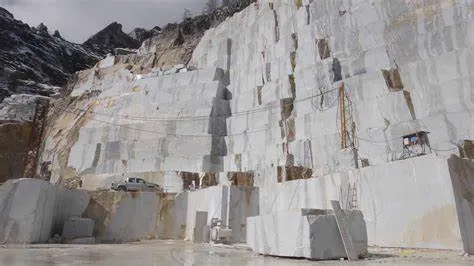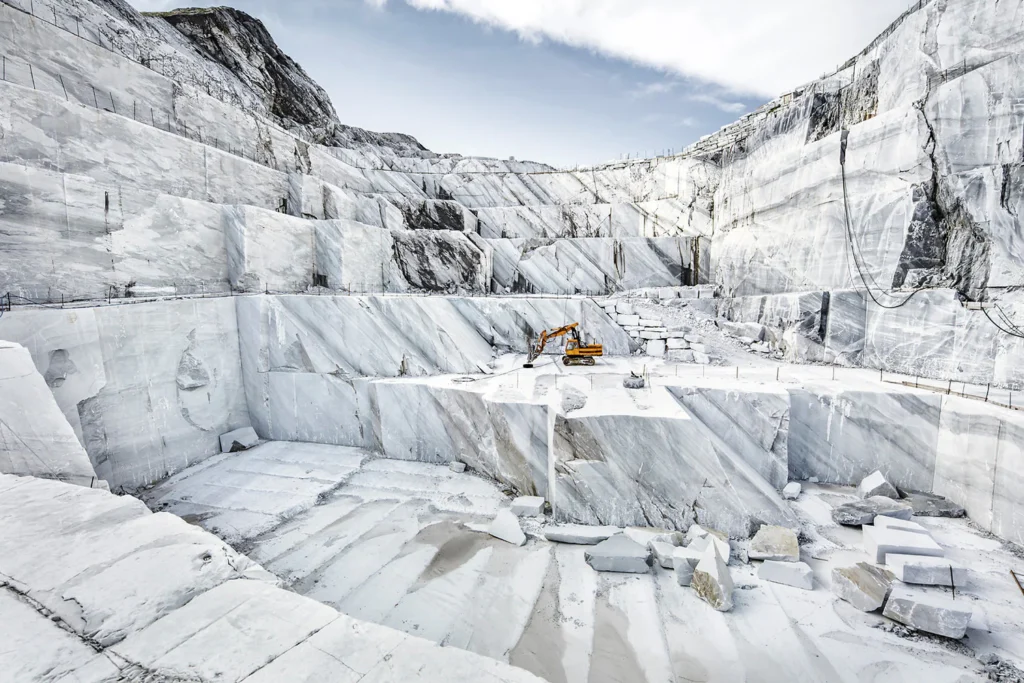
Marble slab a term that instantly evokes images of elegant kitchens, luxurious bathrooms, and timeless architecture.
Exploring the Origins, Uses, and Enduring Value of Marble Slab from Ancient Times to Modern Spaces
Marble slab a term that instantly evokes images of elegant kitchens, luxurious bathrooms, and timeless architecture. But where did marble slab actually begin? What historical journey brought it from rugged mountainsides to your home countertops?
In this article, we’ll take a deep dive into the origins of the marble slab, its journey through civilizations, and its ongoing relevance in architecture, design, and construction. We’ll also cover practical insights, including marble slab cost, maintenance, and popular types such as Carrara marble slab and Calafate marble slab.

The Origin of Marble: Nature’s Masterpiece
Marble is a metamorphic rock formed when limestone is subjected to extreme heat and pressure over time. The mineral composition, particularly calcite, gives marble its signature veining and patterns. This transformation happens deep in the Earth’s crust, often over millions of years.
Ancient Beginnings of Marble Slabs
The use of marble dates back thousands of years. The earliest marble quarries can be traced to:
- Ancient Egypt, where marble was used in pyramids and temples.
- Greece, where Parian and Pentelic marble were widely used for sculptures and temples like the Parthenon.
- Rome, which further commercialized marble use in architecture. The Romans developed one of the earliest forms of marble slab cutting using primitive saws and sand abrasives.
These ancient civilizations established marble not just as a material, but as a symbol of strength and sophistication.

From Quarries to Slabs: The Marble Fabrication Process
The modern marble slab fabrication process begins with quarrying. Large marble blocks are extracted and transported to cutting facilities, where they are sliced into slabs of varying thickness, commonly 2cm or 3cm.
These slabs are then polished or honed, depending on whether you want a polished marble slab with a glossy finish or a honed marble slab with a matte, textured look.
Learn more: what is a marble slab?
How Marble Slabs Became Household Staples
Marble slabs transitioned from classical structures to modern homes during the Renaissance. Italian artists and architects like Michelangelo popularized Italian marble slab such as Carrara. Today, marble slab countertops, backsplashes, and flooring are essential elements of interior design, celebrated for their natural beauty and versatility.
Practical Applications of Marble Slabs
1. Marble Slab for Kitchen
Used for countertops, islands, and even food prep surfaces, marble offers both aesthetic appeal and heat resistance. Want tips on usage? Check out: How to Use a Marble Slab as a Food Prep Surface?
2. Marble Slab for Bathroom
Perfect for vanity tops, walls, and shower panels, marble resists moisture when sealed properly.
3. Marble Slab Flooring & Wall Cladding
Large-format slabs are often used in luxurious floor installations and dramatic wall treatments.
4. Decor and Repurposing
Have extras? Here’s inspiration on What to Do with Leftover Marble Slab?
Understanding Marble Slab Specifications
Before investing, it’s essential to understand:
- Marble slab thickness: Commonly 20mm (2cm) or 30mm (3cm)
- Marble slab size: Usually around 9–10 feet long by 5–6 feet wide
- Marble slab weight: A 3cm thick slab can weigh around 800–1,000 lbs depending on size
- Marble slab price: Can range from $40 to $200+ per square foot based on quality and origin
- Marble slab cost: Installation, fabrication, edge profiles, and sealing all influence total cost
Types of Marble Slabs
Each region produces distinctive varieties:
- Carrara marble slab – White to blue-grey, fine veins
- Calafate marble slab – Known for unique coloration and durability
- Green marble slab, black marble slab, and white marble slab – Widely used for contrast and bold statements
- Engineered marble slab – Combined with resin for improved durability
- Natural marble slab – 100% stone with authentic veining
Pros and Cons of Marble Slab vs Granite Slab
| Feature | Marble Slab | Granite Slab |
|---|---|---|
| Appearance | Softer, elegant veining | Grainy, speckled |
| Durability | Softer, can scratch | Harder, more resistant |
| Maintenance | Requires sealing | Less frequent sealing |
| Popular Use | Bathrooms, feature walls | Kitchens, outdoors |
Explore: How to Figure Square Footage for Granite Countertops?
Care, Maintenance & Longevity
Marble requires thoughtful maintenance to preserve its beauty:
- Marble slab sealing: Recommended every 6–12 months
- Marble slab cleaning: Use pH-neutral cleaner
- Marble slab polishing: Revives shine—How to Polish Marble Slab?
- Marble slab durability: Lasts decades with proper care
- Marble slab resale value: High ROI for upscale remodeling
Where to Buy Marble Slabs?
You can explore:
- Local marble slab suppliers near me
- Imported marble slab from Italy, India, and Turkey
- Marble slab showroom displays for pattern selection
Also consider installation methods and supports, like How to Install Hidden Brackets for Granite Countertops
Final Thoughts: The Legacy of Marble Slab
From the ancient quarries of Greece and Rome to your contemporary home, the marble slab represents beauty, strength, and timeless elegance. Whether you’re installing a marble slab countertop, designing a marble backsplash, or using a slab as a food prep surface, you’re participating in a long and rich tradition of craftsmanship and style.
Anchor Links Summary

